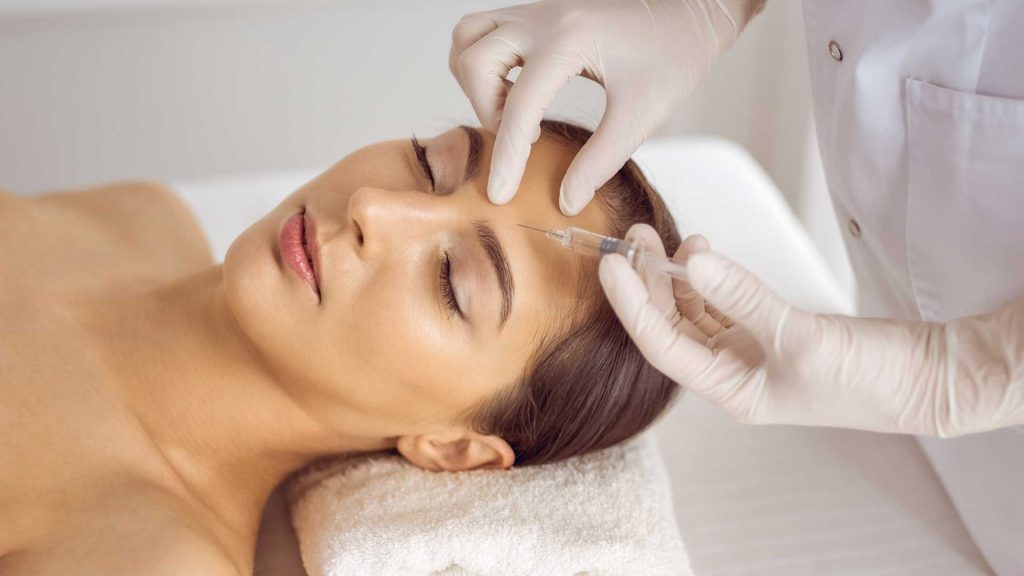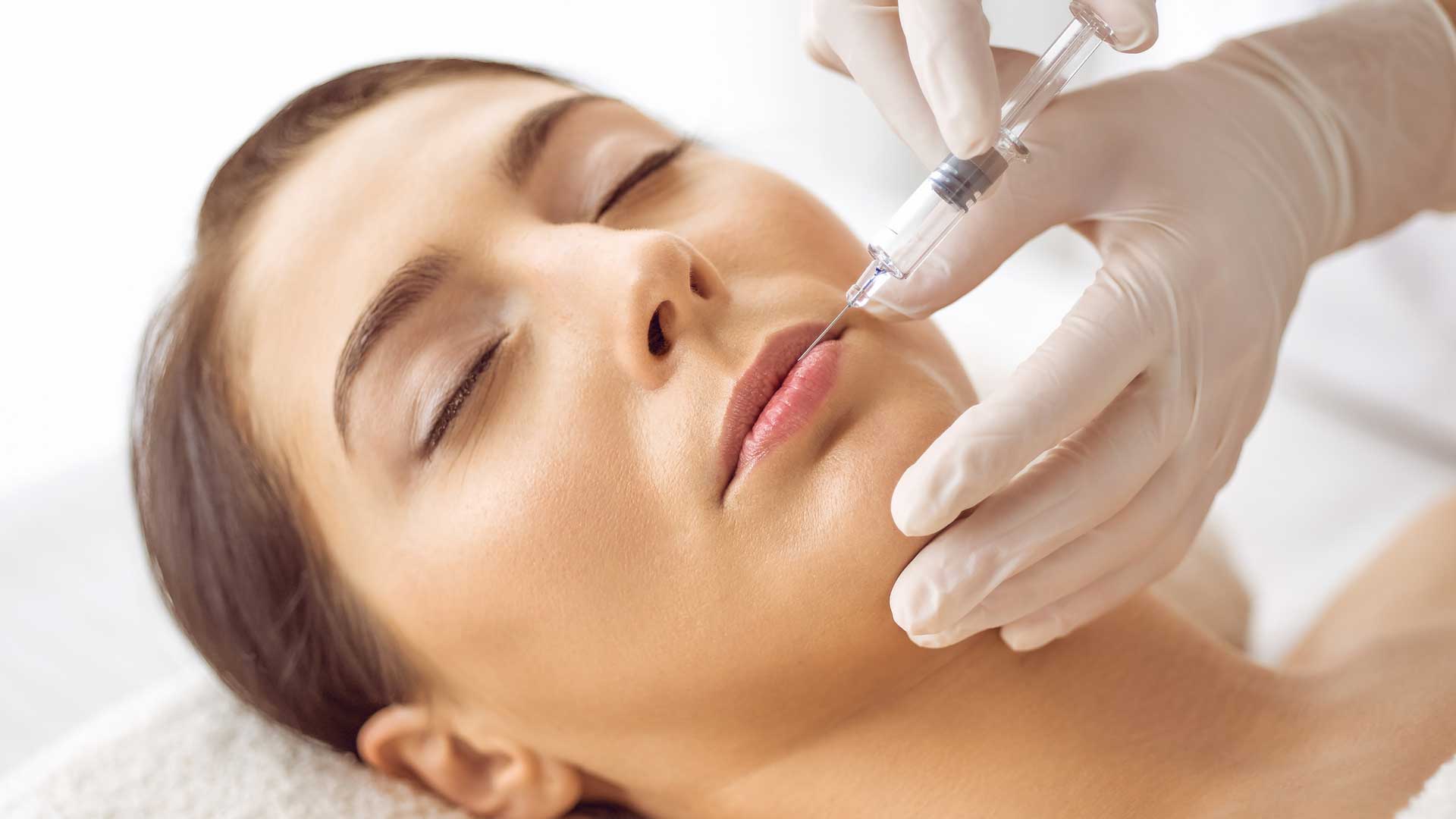What Are Dermal Fillers?
Dermal Fillers are a group of clear gels that we use in the medical aesthetics industry to create volume and lift in skin and tissues. There are many different types of fillers ranging from the short term to the long term, thick to soft and even permanent fillers.
Fillers can be used to soften fine lines and wrinkles, improve hydration, add volume, hydrate and lift your facial contours. Although primarily used in the face, they have multiple uses including for hand rejuvenation and improvement of the décolletage area.
How do they work?
Dermal fillers can be injected into areas of the face to restore and fill areas where the natural volume has been lost. They can also be used to enhance and give more structure to the face.
There are many different types of filler, some practitioners may use permanent or semi-permanent fillers, which in our experience can lead to complications. Hence, we only use reversible, hyaluronic acid fillers. Hyaluronic acid is a substance already present within our skin in varying degrees.
It acts like a sponge holding water, but after the age of 25, the amount of hyaluronic acid produced by the body is reduced, and the rate at which it is broken down is increased. This means overall that with age, the plumpness, hydration and youthfulness of your skin is reduced, leading to the outward signs of ageing. If you want to replenish your skin’s hyaluronic acid reserves and thus, not only improve shaping contour but also rehydrates the skin and improve skin texture, we can achieve that by using hyaluronic acid-based dermal fillers.
Who are they suitable for?
Fillers are very popular for adults of all ages as they can provide fuller lips, definition and also create structure. Also as we get older we might want to fill areas where we notice signs of ageing such as the midface where we often lose volume and the lower face where the loss of structure as we age causes our skin to sag around the jowl area. For Men, Jawline definition is also an emerging and popular treatment for young men who want that chiselled jawline look.
What areas can be treated?
Dermal fillers can be used in the following areas:
Lip rejuvenation and augmentation: Rehydrate, lift and add volume to your lips and its borders as well as upturning corners of your mouth if they are downturned.
Nasolabial folds: These are the nose to mouth lines, which can become heavier with age. Fillers can be used to soften these lines and improve your facial contours, reducing the lines that go from your nose to the corner of your mouth.
Cheek augmentation: This treatment is popular with both the young who want to stay fashionable and ones with more prominent cheekbones, and also if you have lost midface/cheek volume. Rejuvenating your cheeks can give a tremendous lift to the midface, nasolabial folds and even affect the jawline and jowls.
Marionette lines: These are the small lines that appear in the corner of the lips and join the jowl. These are the products of ageing mid and lower face and are very easily treated with filler.
Peri-oral sculpting: Filler can be used to redefine the area around the mouth, which is prone to fine line formation and smoker’s lines around the lip
Smile lines: These vary on a spectrum; some being very easy to treat while others more difficult depending on their location and how much they have been engrained. This needs to be assessed on a case-by-case basis.
Jawlines: Fillers can be used to define the contours of your jaw, and the angle of your jaw. Jawline definition is also an emerging and popular treatment for young men who want that chiselled jawline look.
Hands: If you want to retain a youthful appearance in the back of your hands.

What is the difference between botox and dermal fillers?
Botox is a brand name for Botulinum Toxin which can be used in small doses as a muscle relaxant. It is injected into the muscle to stop it contracting and moving. Botox is often used in the aesthetic industry to stop undesired movement, such as frown lines etc. Dermal fillers are also injected into areas of the face, however that is where their similarity ends. Fillers do not stop movement, instead they restore and fill areas where the natural volume has been lost. Dermal fillers use naturally occurring hyaluronic acid to add volume to the face.
How long do dermal fillers last?
There are many different types of filler and they will last for different lengths of time Some practitioners may use permanent or semi-permanent fillers, which in our experience can lead to complications. Hence, we only use reversible, hyaluronic acid fillers. The long term fillers last for 18-24 months and the short term fillers last 9-12 months (it depends on the area being treated as to whether the soft short term filler is used or the harder longer term filler).
What are the benefits?
Fillers can be used to soften fine lines and wrinkles, improve hydration, add volume, hydrate and lift your facial contours. They can provide fuller lips, definition and also create structure. As we get older we might want to fill areas where we notice signs of ageing from loss of volume. For Men, Jawline definition is also a popular treatment for a more chiselled jawline.
Due to their flexibility, dermal fillers can be used in multiple areas across the body. Although most commonly used in the midface/cheek and lower face, there are instances where they may be used in the frown or forehead lines in conjunction with muscle relaxant injections.
What to expect after dermal fillers
Immediately after a treatment of Dermal Fillers you might experience a slight redness and swelling and occasional itchiness. These are normal effects as a result of the injection and will disappear over the next 7-14 days. You can treat any pain, swelling or bruising from the injection with an ice pack.
Swelling can last for 1-2 days,
Bruising can last 5-7 days although this can be concealed with make-up after 6 hours.






 Download Menu
Download Menu